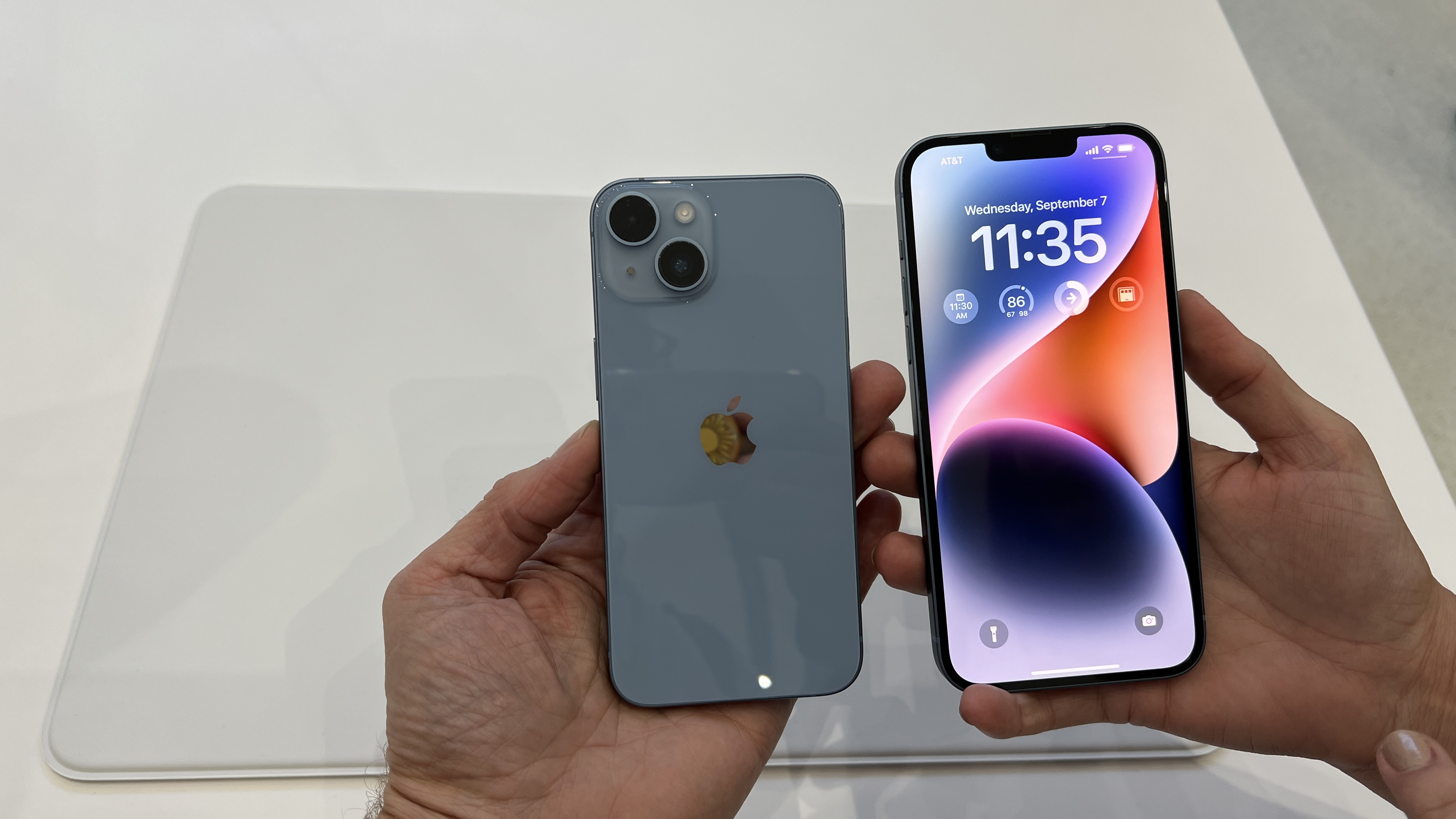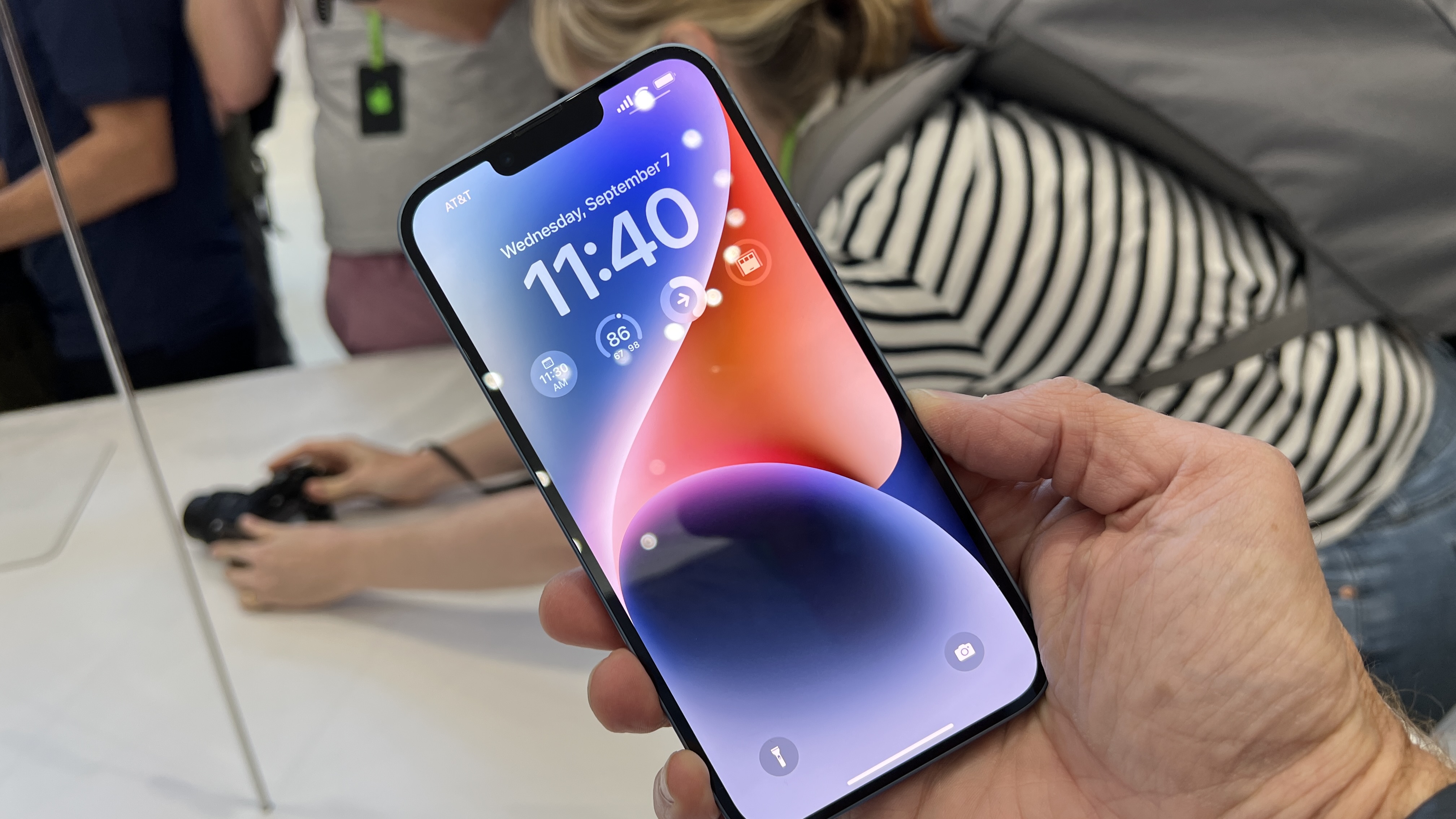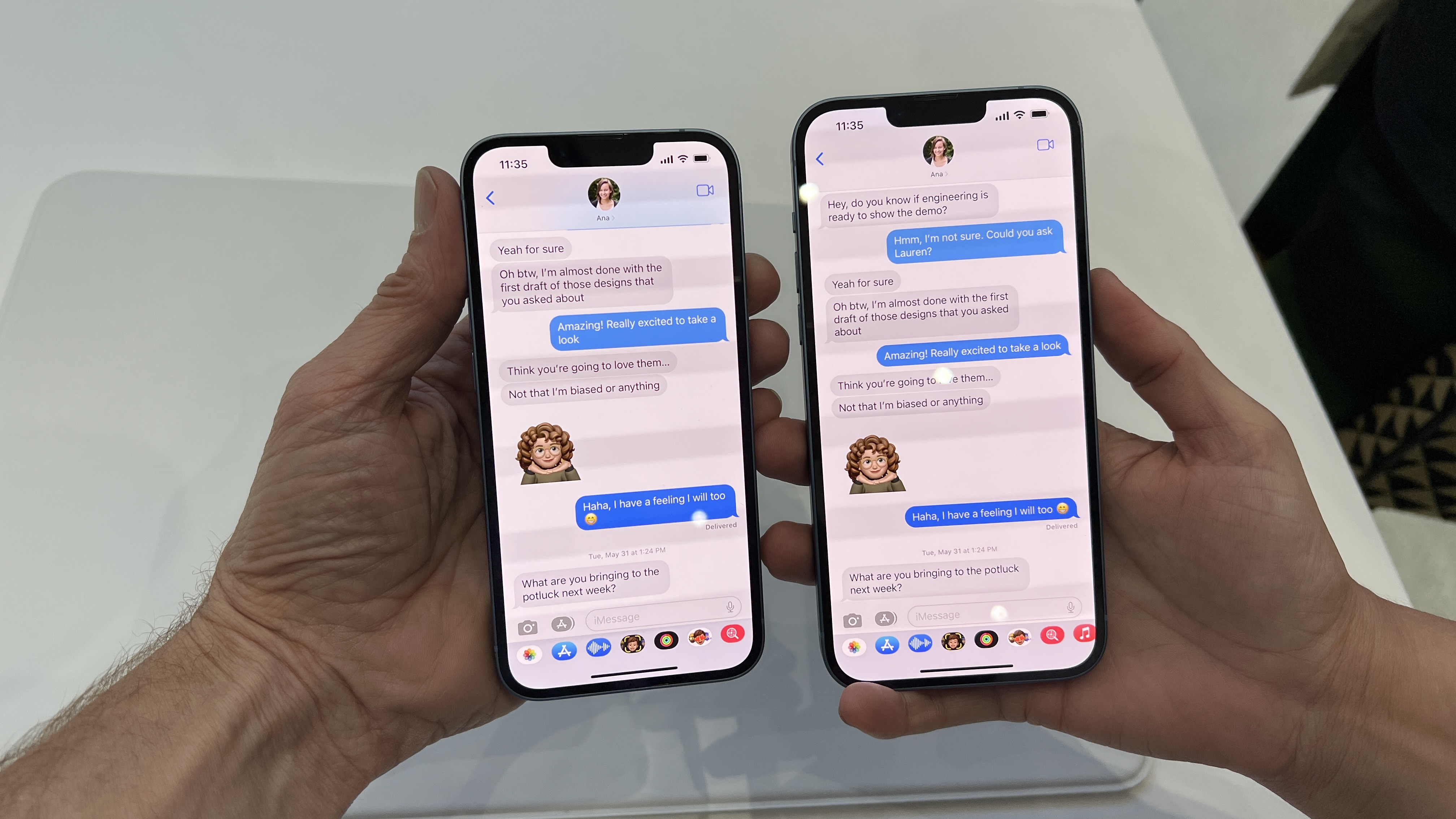iPhone 14
Apple's iPhone 14 is, by and large, a safe update for those who already love the iPhone 13. It keeps what is becoming an iconic design and – somewhat surprisingly –last year's A15 Bionic (which is, granted, a wickedly powerful chip in its own right), but it also doesn't always advance the art in a way that helps Apple keep pace with competitors.
What we have now, for the first time in a while, is two distinct iPhone tiers: for lack of a better term, Basic, which includes this iPhone 14 and the iPhone 14 Plus, and what I'll call Premium, which encompasses the iPhone 14 Pro and iPhone 14 Pro Max.
Last year, the entire line of iPhones got the same A15 Bionic chip. This year, the Apple iPhone 14 and 14 Plus get the A15 Bionic, while the iPhone 14 Pro and Pro Max get the new A16 Bionic. Also worth noting is that the iPhone 13 mini did not get an upgrade, and it may be reaching the end of its pint-sized life.

iPhone 14 price and availability
Considering how similar the iPhone 14 is to the iPhone 13, it should come as no surprise that the price is the same. $799 / £779 / AU$1,349, for the base 128GB model.
Pre-orders are kicking off on Friday, September 9, with retail availability from September 16.

Design, materials, and display

There is nothing wrong with the iPhone 14 design. It's a virtual replica of the iPhone 13 but it might suffer a bit in comparison to the new iPhone 14 Pro and 14 Pro Max, both of which sport the new Dynamic Island, a fungible zone that houses both the TrueDepth module and display information.
For those unfamiliar with the design language Apple first introduced with iPhone 12, the 6.1-inch iPhone 14 is essentially a thin slice of technology sandwiched between two pieces of luxurious glass that may or may not be Gorilla Glass Victus. The cover screen still has the Ceramic Shweild, which should provide an additional level of protection.
The roughly 75.1mm x 146.7mm x 7.65mm (0.30 inches) 173-gram body is all held together by a smooth aluminum band. Button placement, microphone, and speaker grill placement are all unchanged from the previous iPhone 13. You have the larger power/sleep/Siri button on the left and the silence slider with the volume buttons below it on the left.
Along the base, sitting between speaker grills and mic holes, is what might be thought of as the lightning port's last hurrah. Even though Apple is facing pressure from the European Union to change all its gadget ports to USB-C by 2024, it's sticking with lighting for this model. All your old cables will be pleased.
This is the first iPhone to do away with a physical SIM slot in favor of an all-eSIM system. It is strange to see a smartphone without that instantly recognizable panel and the little hole for the special tool to pop the SIM tray out.
On the back is the still-square-ish camera array, which appears unchanged from the iPhone 13. There are two 12MP cameras, one wide and the other ultra-wide.
Because so much is the same, the most exciting thing, design-wise, about the iPhone may be Apple's exquisite new purple body color option. Yes, purple is the in-color this gadget season, with Apple following Samsung's introduction of Bora purple for its Samsung Galaxy S 22 line, Galaxy Z Flip 4, and Galaxy Buds 2 Pro.
Apple has left the iPhone 13's 6.1-inch Super Retina XDR display pretty much intact on the iPhone 14. It's still 2532‑by‑1170-pixel resolution at 460 ppi and, yes, still has the notch, which accommodates the updated TrueDepth module that includes all the AR sensors and, still, a 12MP camera.
Cameras and battery life
You have a total of three cameras on Apple's iPhone 14, the 12MP wide and the 12MP ultrawide on the back, and the 12MP True depth camera on the front.
Apple said it upgraded the main camera with a larger ƒ/1.5 aperture and larger, 1.9 µm pixels, for better low-light performance. The 12MP wide-angle appears unchanged. However, the TrueDepth camera on the front now supports autofocus.
Though I only had a few moments in the demo room, I did shoot with all the lenses and thought the images looked good, but I need more time with them. I will say that I could see the TrueDepth camera's new autofocus in action and can see how that'll be useful.
There are also some new camera modes. Cinematic Mode can now shoot in 4K at 30 fps and 4K at 24 fps. There's also a brand new Action Mode, a sort of electronic gimbal that takes bumpy video and smooths it way out by, essentially smart-cropping on-the-fly. Neat idea, though I think you lose quite a bit of the video surrounding your subject.
Apple never talks about battery size, but it did say that the iPhone 14 has the best battery life ever on an iPhone. We'll have to assume that means at least 15 hours but could mean a day or more of video playback. Obviously, I'd need to test these claims.
The phone still supports MagSafe wireless charging, but did not, it seems, get any sort of fast-charging bump.
Performance and software
The iPhone 14 is running Apple's 1-year-old A15 Bionic. It's a bit frustrating to not see the latest silicon here, but even now, the A15 Bionic is the industry-leading mobile CPU. The 6-core CPU and 5 Core GPU are no slouch when it comes to performance across a wide range of tasks. I got to watch a bit of gaming on the iPhone 14 and, naturally, it looked smooth.
Apple has introduced a better thermal system in the iPhone 14 and 14 Plus, which may lead to some battery and performance gains, but I'll withhold conclusions until I benchmark.
There are a couple of intriguing new features in the iPhone 14 line that, yes, are included in the iPhone 14: emergency satellite communications and crash detection.
The satellite communication capabilities are built into the phone and, as Apple described it, use the phone's existing antennas and some powerful algorithms to manage what is often a very low-bandwidth connection (you have to be outside and have a clear view of the sky). It squeezes text messages down and also offers some easy-to-use boilerplate communications to ensure that you can communicate the essentials when necessary. The service starts off as a free trial, but eventually, you'll have to pay for the service. No word, though, on how much.
Crash detection, which was also introduced on the Apple Watch 8, knows when your car is in a crash and can quickly communicate the situation. I'm sure we'll see people trying to fool the detection in short order.
Obviously, we have no idea how well these features work and may struggle to simulate a crash and a situation where we need satellite communication (though the satellite comms can also work in Find My scenarios).
What we have a firmer grasp on, though, is what the software and interface will be like. Many of us have been running the iOS 16 public beta for months and while no one will have any trouble recognizing iOS trademark design flourishes, it does feature a number of significant updates.
Chief among them is the new Lock Screen. As the first thing you see when you wake up your phone (well it was before always -on displays), the Lock Screen is like the iPhone's calling card, announcing to you and the world its intentions.
Thanks to new fonts and sizes, it's a bold new look and the image segmentation that can put a portion of your image on top of the time is a stunning effect. There's also more utility in the lock screen thanks to customizable widgets.
New iPhone 14 owners will find redesigned notifications (no more crowding the lock screen) and the ability to use multiple lock screens with specific focus modes assigned to each one.
They'll be setting multi-stop directions on the new maps, editing and retrieving text messages after they sent them, and grabbing image subjects straight out of photos, and dropping them into apps and messages.
There is a lot to explore in the new platform, all of which could fundamentally change how you use and feel about the iPhone 14. One the unit we played with the new Lock Screen looked quite nice.
The entire iPhone 14 line is, by the way, 5G and launching into a world where solid 5G coverage is far more ubiquitous.
Early verdict
Even though the iPhone 14 isn't a major leap forward, I still like the look and feel of the device. Granted, I might only be able to tell the difference between it and the iPhone 13 through the new colors (I played with a nice baby blue) and that missing SIM slot,
The iPhone 14 is a marginally more powerful phone than the last generation, at least in some of the lenses, and may still hold a raw performance margin over some new Android phones. But it'll be hard to look at the iPhone 14 and not cast sideways glances at the spiffy new iPhone 14 Pro and Pro Max and their notch-free display and 48MP cameras.
0 comments:
Post a Comment